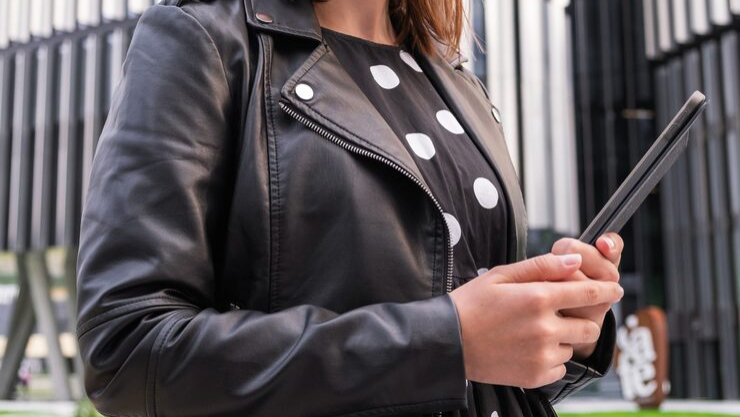Leather jackets are more than just clothing—they’re personality statements, style investments, and in some cases, treasured heirlooms. Whether you own a rugged biker jacket, a minimalist bomber, or a suede trucker, keeping it in pristine condition is key to ensuring it lasts for years. In 2025, weather patterns across the USA are more unpredictable than ever, with sudden rain showers, unexpected snowfalls, and damp coastal breezes posing real threats to untreated leather.
The good news? Waterproofing your leather jacket is easier than you think—and with modern products and techniques available in 2025, you can shield your investment without compromising its look, feel, or flexibility. Before this, explore variety of <a href="https://cuirjackets.com/">Leather Jackets in USA at Cuir Jackets</a> here.
Why Waterproofing Your Leather Jacket Matters in 2025
Leather, by nature, is porous. Even premium, full-grain hides will absorb moisture if exposed to prolonged dampness. When water penetrates leather, it can cause:
• Stiffness and cracking after drying.
• Stains or discoloration in lighter shades.
• Warping of shape, ruining the tailored fit.
• Mold or mildew growth in humid environments.
In 2025, with the rise of “buy less, buy better” fashion trends in the USA, consumers are focusing on keeping quality pieces for the long haul. Waterproofing doesn’t just protect your jacket; it preserves its original color, softness, and resale value.
Step 1: Know Your Leather Type
Before you start, identify what type of leather you’re dealing with. Not all leather requires the same approach.
1. Smooth Leather (Full-Grain, Top-Grain)
Classic biker or racer jackets often use this. They respond well to wax-based protectants.
2. Suede or Nubuck
These have a velvety texture and require special sprays to avoid matting or darkening.
3. Patent Leather
Already has a glossy, protective finish but still benefits from water-repellent maintenance.
4. Aniline Leather
Soft and natural-looking, but more absorbent, requiring extra care.
Pro Tip (2025 Edition): Many modern jackets now come with a factory-applied hydrophobic coating. Still, this layer wears off with time and exposure, so reapplication is essential every 6–12 months.
Step 2: Choose Your Waterproofing Method
Thanks to innovation, 2025 brings more eco-friendly, leather-safe waterproofing options than ever before. Here are the most effective:
1. Waterproofing Sprays
Best for: Suede, nubuck, and smooth leather
Look for formulas labeled PFC-free or biodegradable, as they’re better for both your jacket and the planet. Popular options now use nanotechnology to create a microscopic barrier that repels water without changing the texture.
How to Use:
•Brush off dust with a soft horsehair brush.
• Hold spray 6–8 inches away.
• Apply in even, light passes—never soak.
• Let dry naturally (avoid heat sources).
2. Wax-Based Conditioners
Best for: Full-grain and top-grain leather These create a slightly richer, darker finish and are perfect for rugged styles like motorcycle jackets. Brands in 2025 now offer vegan wax alternatives for those avoiding animal products.
How to Use:
• Clean leather with a damp (not wet) cloth.
• Apply wax with a microfiber cloth in circular motions.
• Buff lightly after drying to restore sheen.
3. Hybrid Creams
Best for: Everyday casual leather jackets These combine conditioning oils with water repellents, ensuring your jacket stays soft while resisting moisture. They’re a go-to for urban commuters who want style and function.
Step 3: The Cleaning Prep
Waterproofing a dirty jacket traps stains under the protective layer, making them harder to remove later. Before any treatment:
• Spot Clean: Use a leather-safe cleaner to remove surface grime.
• Dry Naturally: Never speed up drying with a hairdryer—it can shrink leather fibers.
• Test a Small Area: Always try your waterproofing product on an inconspicuous spot first to check for color changes.
Step 4: Application Techniques for 2025
Leather care in 2025 benefits from improved tools. Consider these modern application tips:
• Use an Airbrush Sprayer: For an even, professional finish without oversaturation.
• Invest in a Rotating Hanger: This allows you to apply treatments evenly while the jacket turns slowly.
• Pair with UV Protectants: Many modern sprays now offer sun protection to prevent fading.
Step 5: Maintenance Schedule
Waterproofing isn’t a one-time task. Depending on your location in the USA, your schedule may vary:
• Rainy climates (Pacific Northwest): Every 3–4 months
• Snow-prone areas (Midwest, Northeast): Before and midway through winter
• Dry, sunny states (Arizona, Nevada): Every 6 months, focusing on UV + water resistance
• Coastal regions (Florida, California): Every 3 months to prevent saltwater corrosion
Step 6: Storage Matters
Even the best waterproofing won’t help if your jacket lives in a damp, cramped closet.
• Store in a cool, dry place away from direct sunlight.
• Use a wide, padded hanger to maintain shoulder shape.
• Keep it in a breathable garment bag, not plastic, to prevent trapped moisture.
Mistakes to Avoid
In 2025, leather care myths are still floating around—don’t fall for them.
• Skipping Testing: Some treatments darken leather; always test first.
• Over-Treating: More product doesn’t mean more protection—it can clog pores and stiffen the jacket.
• Using Household Oils: Olive or coconut oil can stain and cause uneven absorption.
• Applying on Wet Leather: Always ensure your jacket is fully dry before treatment.
Eco-Friendly Waterproofing Trends in 2025
With sustainability at the forefront of U.S. fashion, waterproofing methods are
evolving.
• Plant-Based Formulas: Using soy waxes and natural resins instead of petroleum derivatives.
• Refillable Spray Systems: Cut down on single-use plastic bottles.
• Low-VOC Products: Reduce harmful fumes during application.
Some brands even offer professional eco-treatment services where your jacket is cleaned, conditioned, and waterproofed in one session without harmful chemicals.
The Quick 2025 Waterproofing Checklist
1. Identify your leather type.
2. Clean and dry the jacket completely.
3. Choose the right waterproofing product (spray, wax, or hybrid).
4. Apply evenly in thin layers.
5. Let it dry naturally, away from heat.
6. Reapply seasonally based on climate.
7. Store in a breathable space.
Final Thoughts
In 2025, waterproofing your leather jacket is less about “rainproof armor” and more about creating an invisible shield that works in harmony with the leather’s natural breathability. With advanced, eco-conscious products and techniques, you can protect your investment without sacrificing its luxurious feel or signature look.
A well-waterproofed leather jacket isn’t just ready for a downpour in Seattle or a snowy New York commute—it’s prepared to be part of your wardrobe story for years to come. And when the skies open unexpectedly, you’ll walk confidently, knowing your style (and your jacket) are safe.







